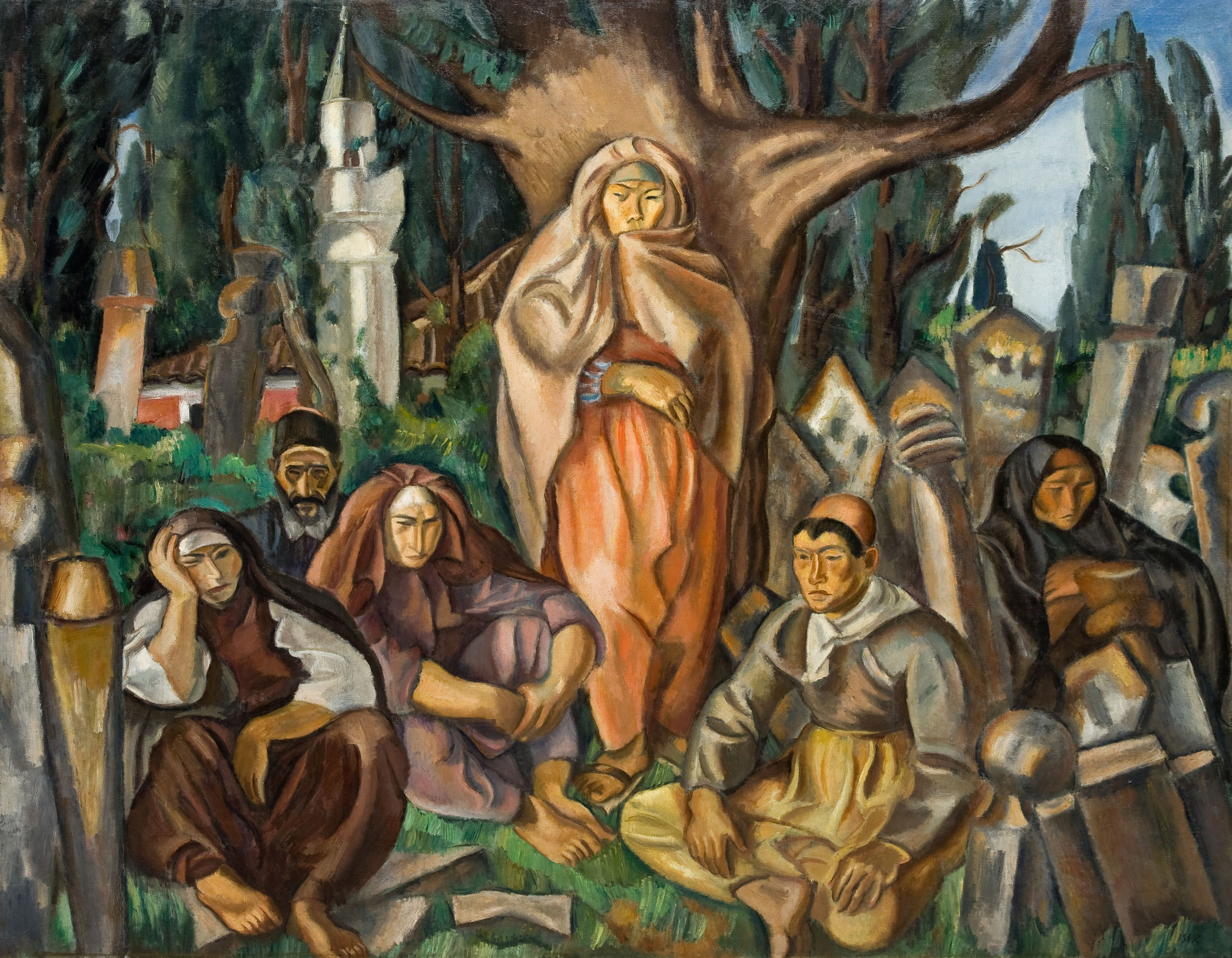Iser’s Tatar family depicts an episode in the life of a Tatar family from Dobrugea, a population whose picturesqueness fascinated Romanian inter-war painters.
The scene takes place in a Muslim graveyard, amidst geometrical stones and pillars; the roof tiles of a little mosque and the white minaret are partly covered by lush vegetation. All characters wear the traditional loose baggy trousers (called șalvar). Harsh angular faces and the veils in which women are wrapped make it difficult to guess their age. Totally self-contained, dignified and statue-like, these ageless people seem to come from times immemorial.
Iser focuses on the characters’ silent grief. He looks at them with sympathy, his exploration respectful of their mourning. This is a meditation on human condition devoid of ethnic tinges.
His handling of the brush and the fairly compact, well-defined volumes are indicative of Iser’s disciplined study of Cézanne’s technique.



